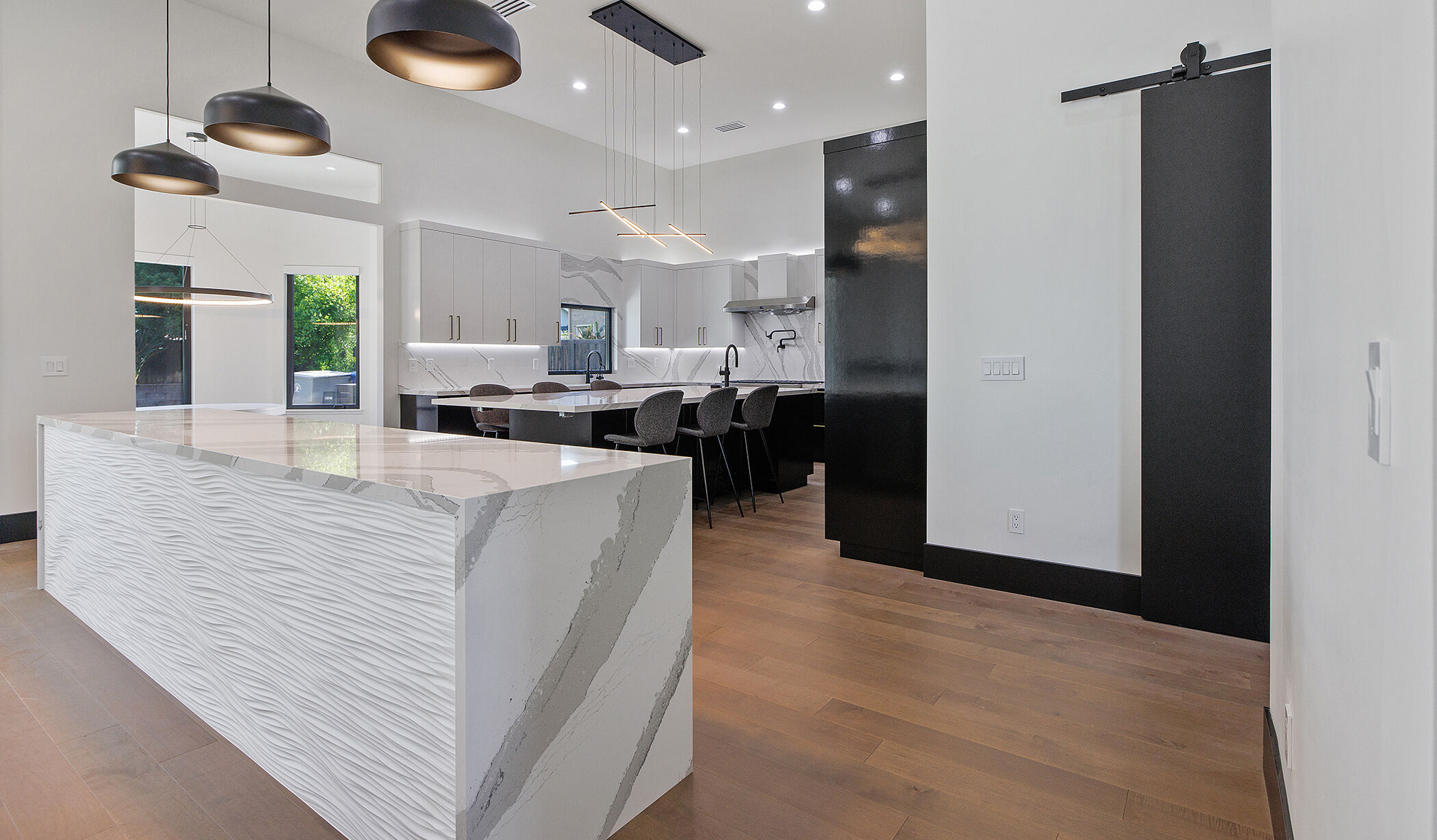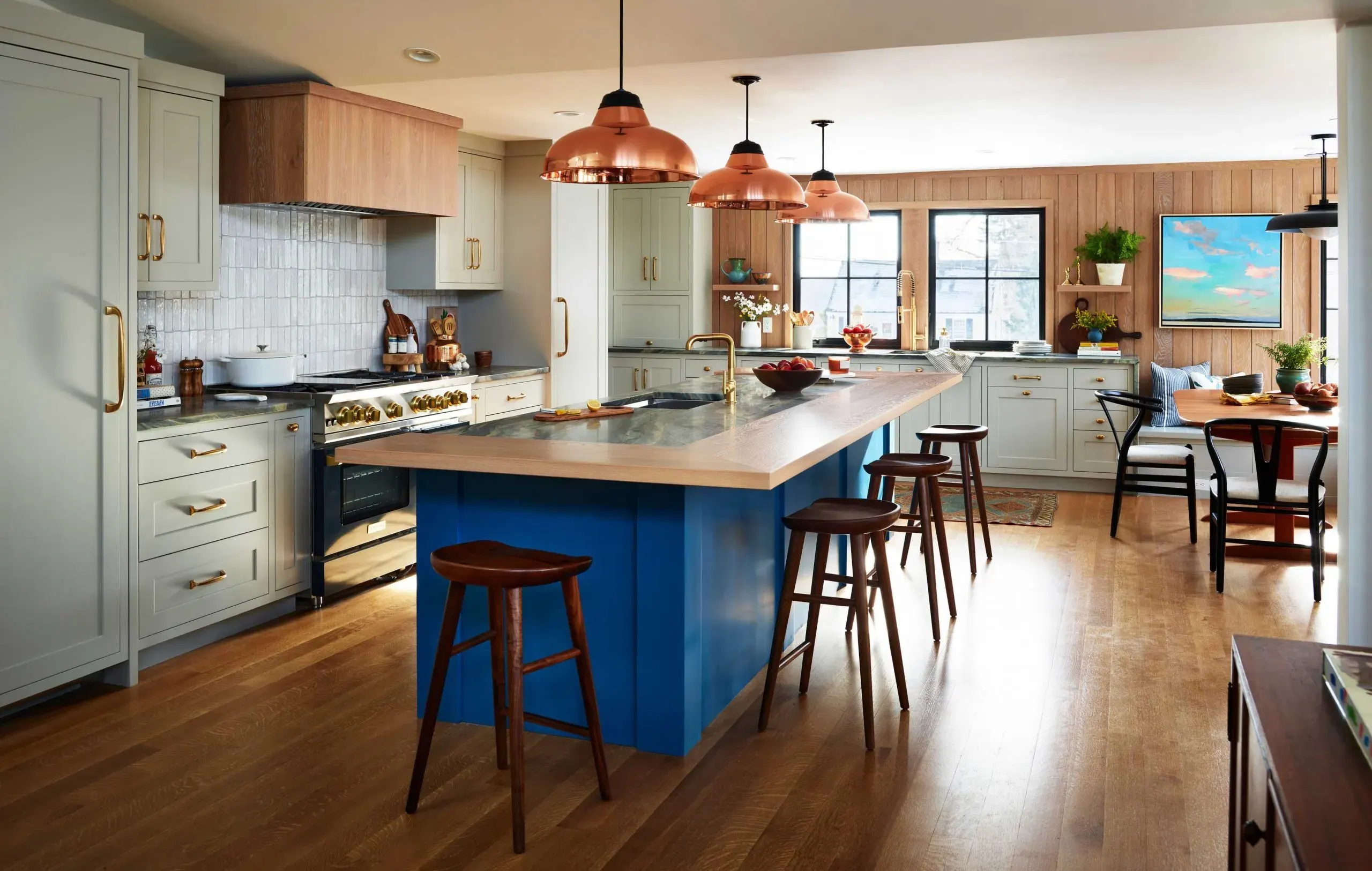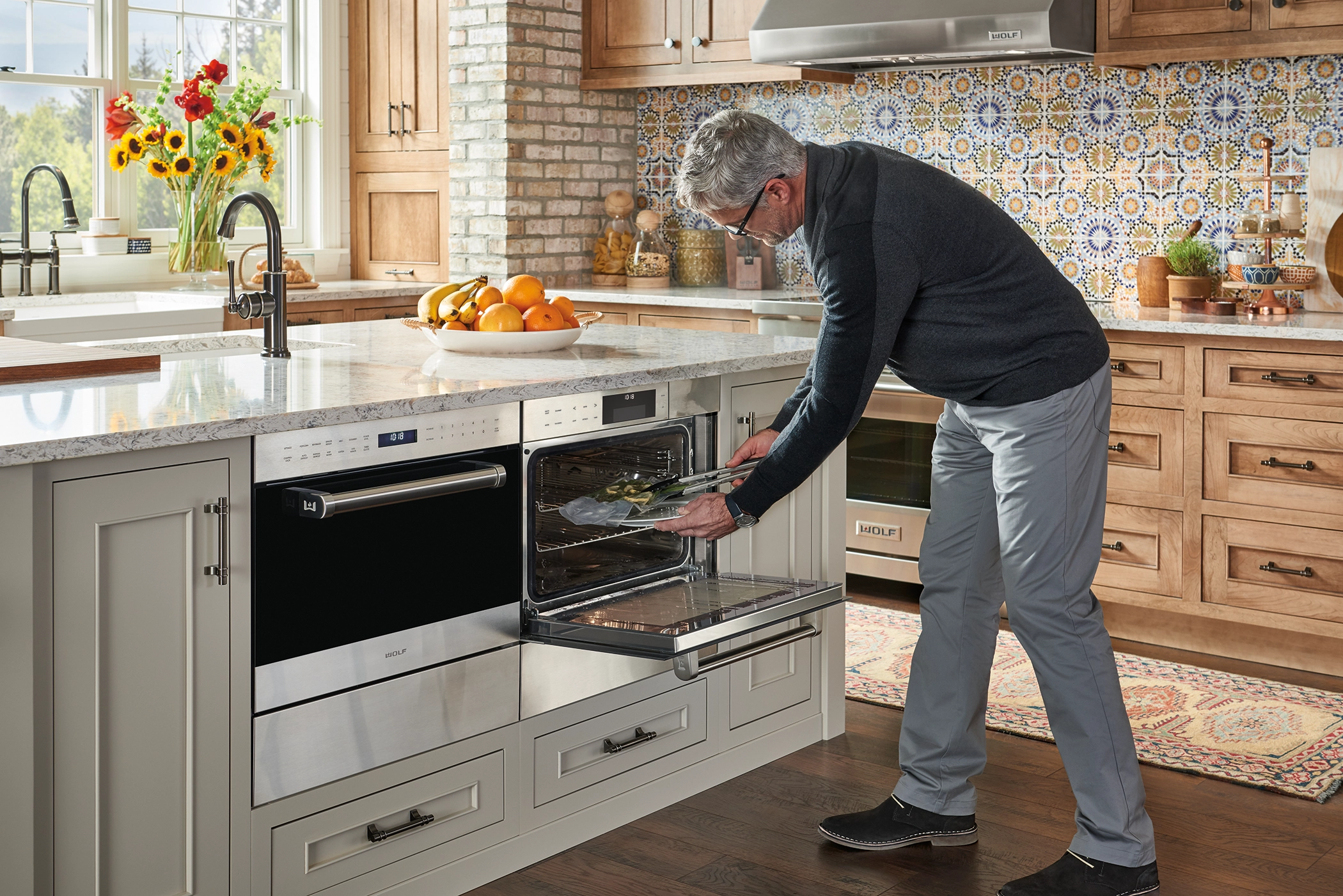If you’re considering remodeling your kitchen or upgrading your appliances, you might be wondering which type of cooktop is right for you. Both gas and induction stovetops cook beautifully, and each method has its own set of advantages and disadvantages. But if you’re looking for direction on which option is best for you, we’ve got you covered with all the information you need. We will go over the difference between gas and induction, and we will provide you with pros and cons for both so that you can make an educated decision.

What is Induction Cooking?
Induction cooktops have electromagnetic coils that transfer heat directly into metal objects through magnetic induction. Underneath the cooktop surface, there is a coiled copper wire. An electric current is passed through the copper wire which forms a magnetic current through the metal cookware, generating heat. The heat is generated in the pot or pan itself, not on the cooktop surface
Pros
Induction can bring more accuracy, and energy consistency. With induction, you get extremely precise temperature control, which allows more controlled cooking. When the cooktop is turned off, the heat transfer ceases instantly, which immediately stops the cooking process.
Induction cooking is also more energy efficient because there is no loss of heat in the transfer process. With gas cooking, extra heat is expelled and lost in the air, whereas with induction, the heat is only transferred directly into the cookware. This precise heating can lead to a much faster, more efficient cooking process. Induction ranges also use electricity, rather than natural gas, which makes them better for the environment.
Another excellent feature of induction cooking is the fact that most of the heat is transferred to the cookware, and not to the cooktop. Compatible cookware must be placed on top of the surface in order to generate high temperatures, therefore it is less of a fire hazard, and is considered a safe way to cook. With induction, there are also no gas emissions into the air, so there’s no chance of the heat catching onto objects like dish towels or oven mitts. When the cookware is removed from the surface, it turns off, so you don’t have to be overly concerned if you forget to shut it off.
According to Chef David Rizzo at PIRCH, “Simply by touching two or three icons, I can get water to boil faster than gas. It’s safer to use with added features you won’t find on a gas cooktop.” Chef David continues, “Induction keeps the kitchen cooler than gas, and it is so much easier to clean than a gas cooktop, just to name a few benefits. I look forward to installing one in my kitchen the next time I upgrade.”
Cons
Because induction requires using electricity, cooking with induction is traditionally more expensive. Most cookware is compatible with induction cooking, like stainless steel cookware for example. However, you may need to swap out your older cookware with induction safe cookware, because induction safe cookware contains iron particles which interact with the electromagnetic coils, creating the heat. If you’re wondering if your older cookware will work with induction, you can simply test it with a magnet. If the magnet sticks to the bottom, it will work with induction cooking.
Cooking with induction can take some getting used to, so you may also experience a learning curve. Induction cooktops heat more quickly than other methods, so you must be careful not to overcook your food. With induction, you might not be able to char ingredients like you can with a gas cooktop. On gas ranges, you can char up vegetables or crisp up tortillas, but you might not be able to achieve those kinds of results with induction.
What's Needed to Install an Induction Cooktop?
When it comes to installation, induction cooktops need a power source of 220 volts. Conveniently, induction cooktops come in a variety of different sizes to best fit your needs.

What is Gas Cooking?
Gas cooktops allow you to cook with an open flame. When the dial on the cooktop is ignited, a mixture of gas and oxygen ignites the pilot light which creates a clicking sound, and the flame travels from the piping to the burner. The open flame then directly heats the bottom and sides of the pan or cookware. The dial can be adjusted, varying the amount of gas into the burner which will influence the intensity of the flame. Once the dial is turned all the way off, the flow of gas stops, killing the flame which stops the cooking process
Pros
One of the pros to gas cooking is having precise temperature control. The heat supply on gas cooktops can be precisely adjusted yourself, with manual and instant control of the heat from high to low.
Many experienced chefs enjoy cooking with gas cooktops. According to PIRCH Customer Experience Chef, Chef David Rizzo, “The primal and visual effects of fire are generally why I enjoy gas cooktops. I like having a visual que from a burner that I’m getting the heat I need to achieve my desired results.” PIRCH Customer Experience Chef, Chef Maria Crow also shared a similar sentiment. “I love fire. I grew up with cooking on a gas range and outdoor charcoal grills. I love how I can visually see the flame and adjust as needed.”
One of the pros to gas cooking is having precise temperature control. The heat supply on gas cooktops can be precisely adjusted yourself, with manual and instant control of the heat from high to low. Many experienced chefs enjoy cooking with gas cooktops. According to PIRCH Customer Experience Chef, Chef David Rizzo, “The primal and visual effects of fire are generally why I enjoy gas cooktops. I like having a visual que from a burner that I’m getting the heat I need to achieve my desired results.” PIRCH Customer Experience Chef, Chef Maria Crow also shared a similar sentiment. “I love fire. I grew up with cooking on a gas range and outdoor charcoal grills. I love how I can visually see the flame and adjust as needed.”
Cons
Gas cooktops can be difficult to clean. Also, sometimes you may have difficulty lighting the burner and turning it on. The pilot light can also burn out, and if you don’t have a good ventilation system, you might be left with a greasy surface. Another disadvantage is that it is considered less safe because you’re cooking with an open flame. Research has also found that gas stoves produce more air pollutants, which can have a negative impact on your indoor air quality. With the price of gas rising, the cost of cooking with gas may go up in the future.
What's Needed to Install an Gas Cooktop?
In terms of installation, a gas cooktop needs a gas line running to your home. For both gas and induction, it is a worthwhile investment to install a ventilation hood for both types of cooking to eliminate buildup of odors and steam.

Conclusion
Ultimately when deciding between gas and induction cooking, it really comes down to personal preference, and your own lifestyle. According to Chef Maria, “When clients ask me ‘what’s your favorite cooktop?’, I often reply with ‘what’s more important is what is your current style of cooking? What’s your go-to appliance for daily meals?”
Chef Maria also made note of the fact that the overall design of your kitchen can be a factor in your decision making. “Aside from functionality, think about the look you are going for, too. Gas is fairly traditional and will work with many different kitchen styles, but I find that induction fits in best with a clean, contemporary, modern look.”
Chef Maria continues, “In the end, they will both cook your food, so that’s the good news, and many brands offer gas/induction options now, so you can have the best of both worlds!”




